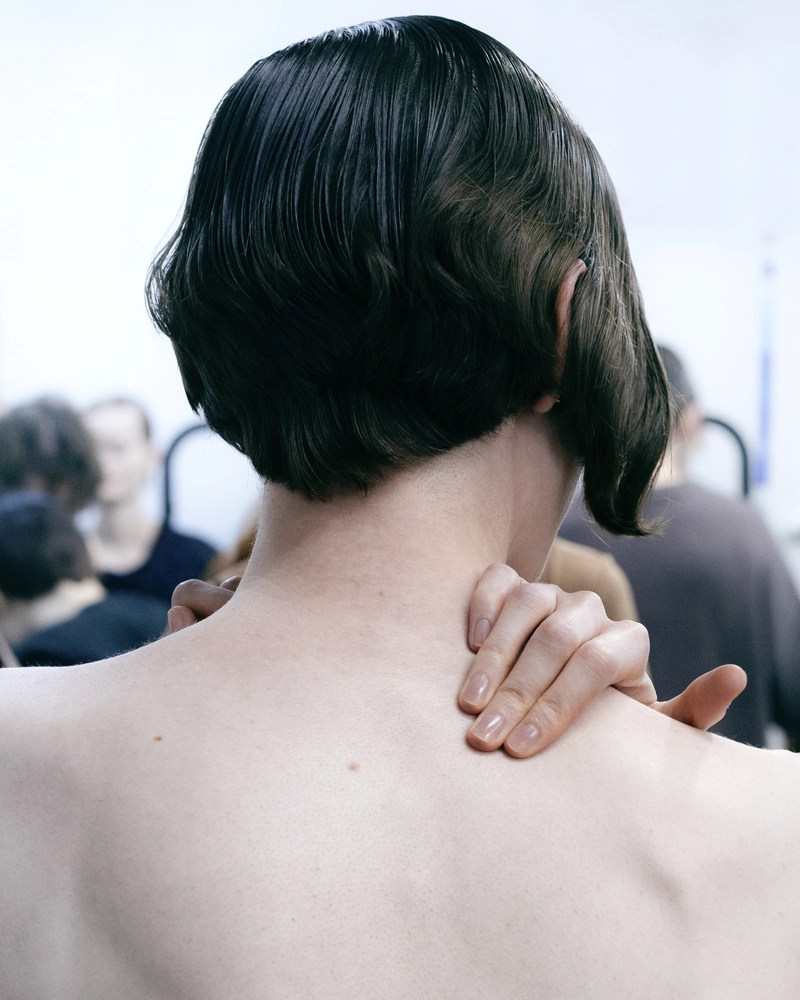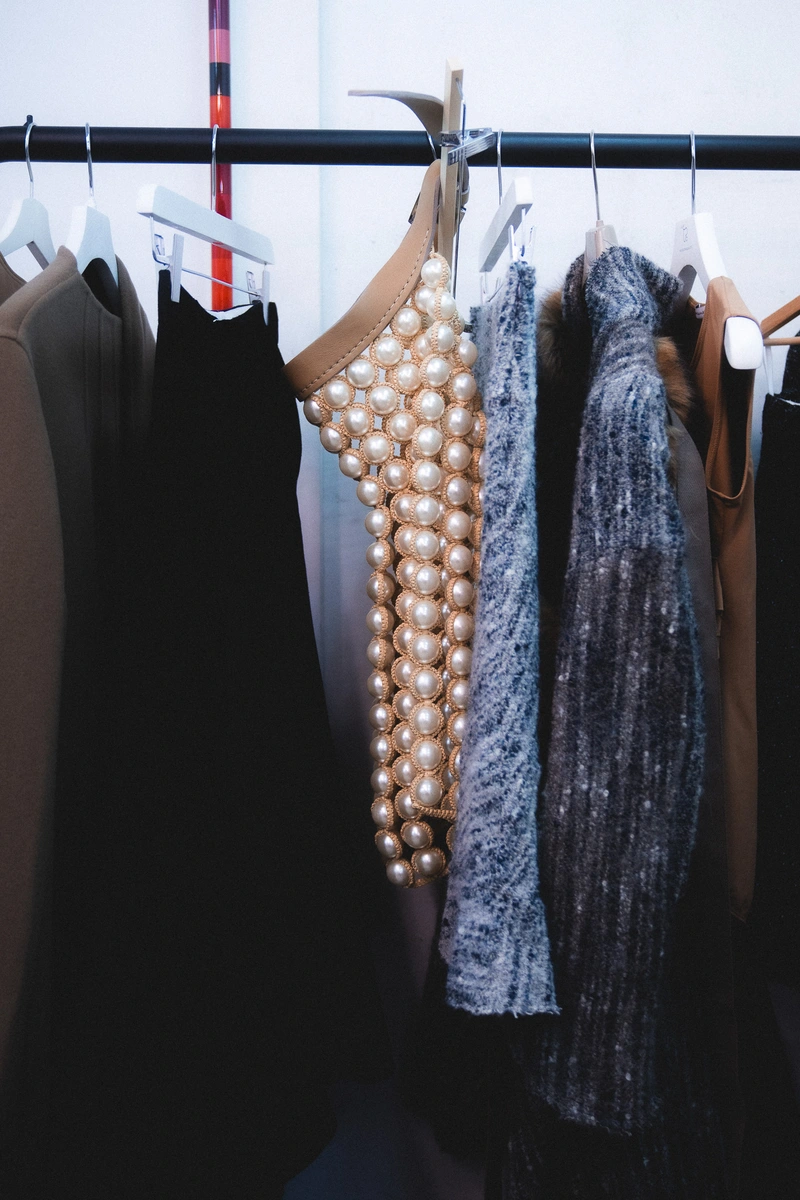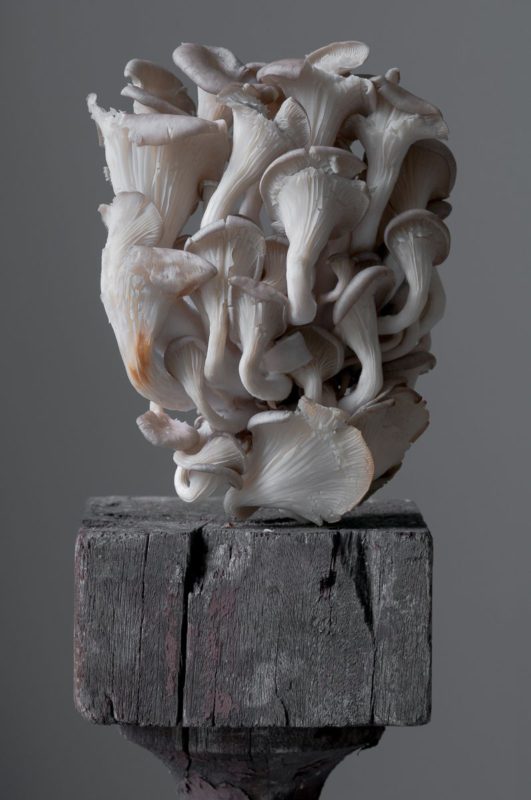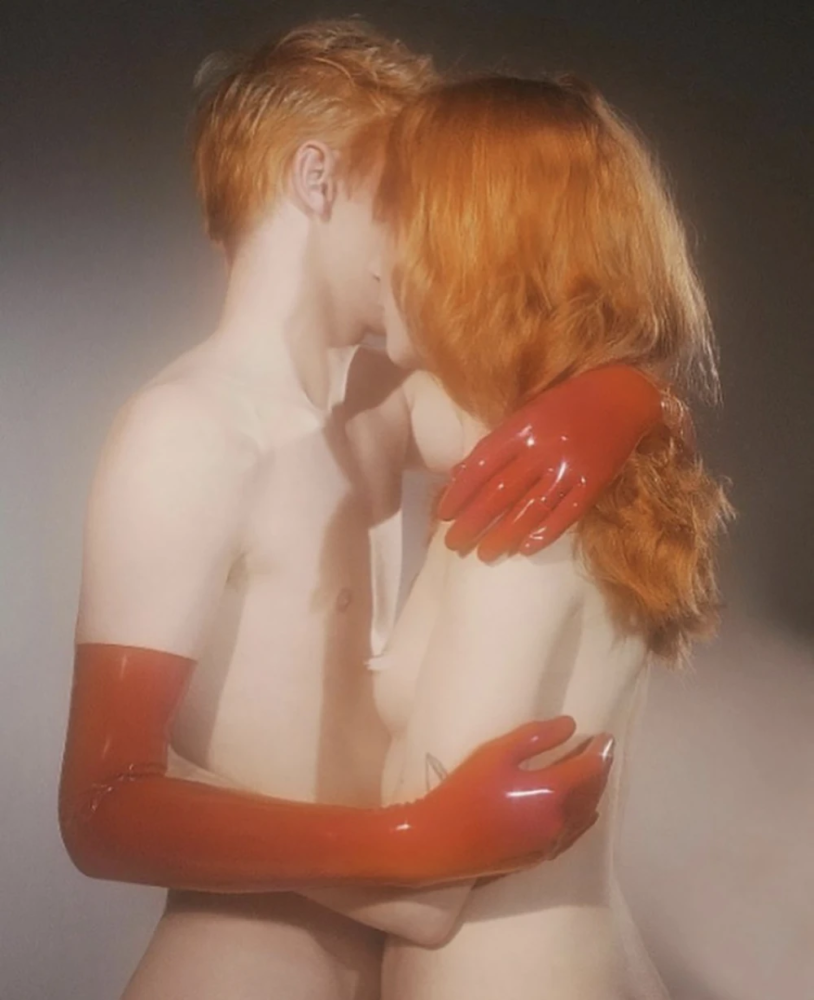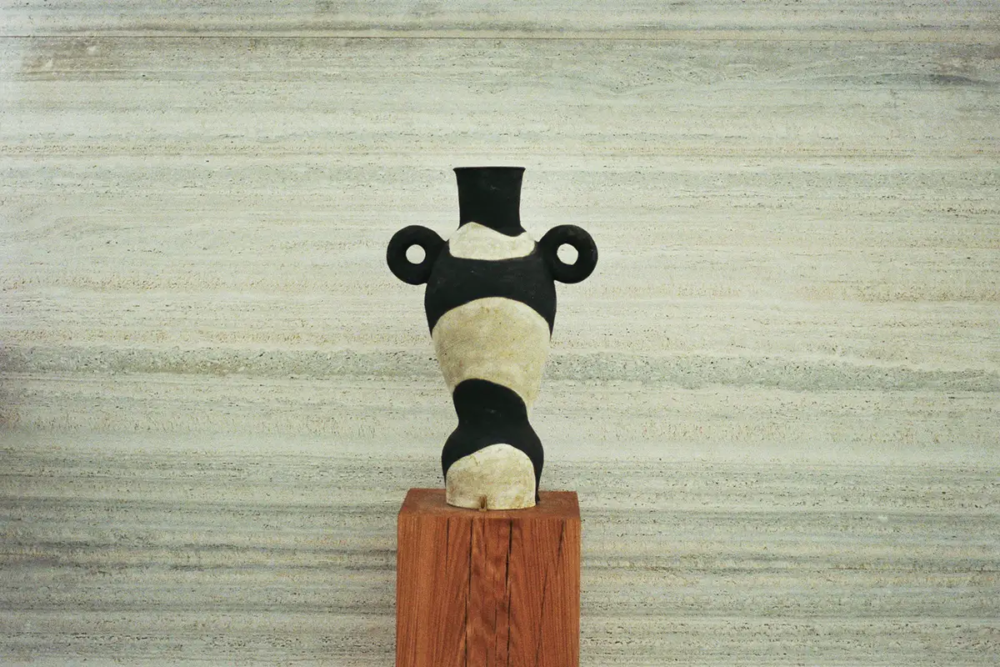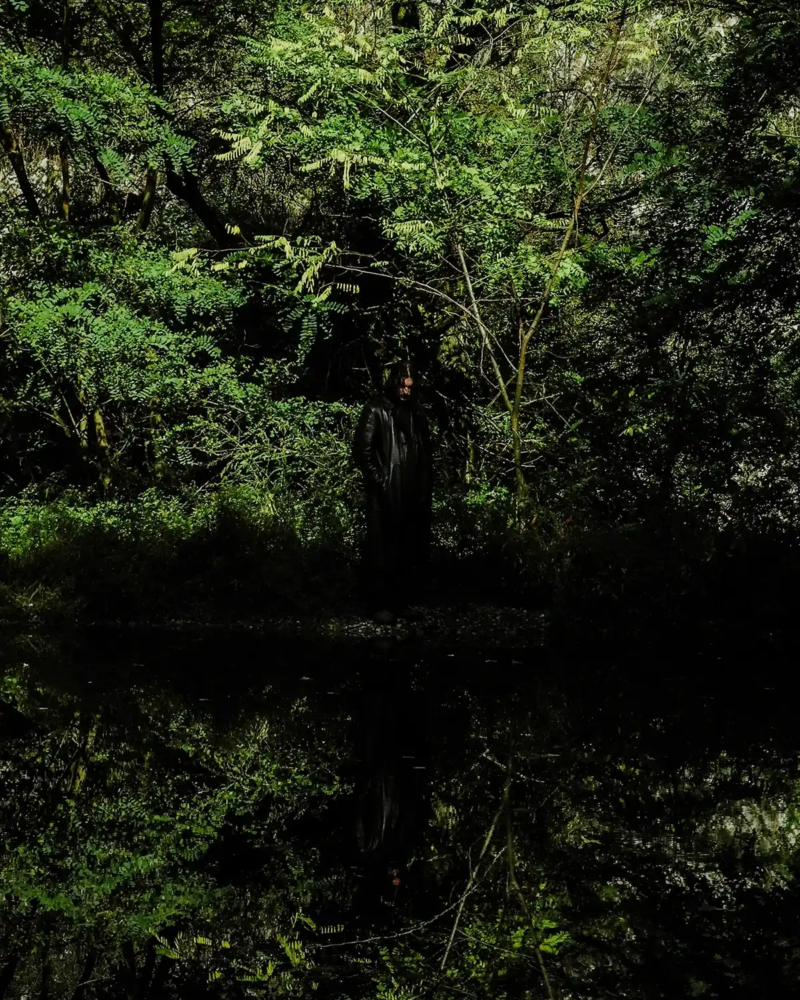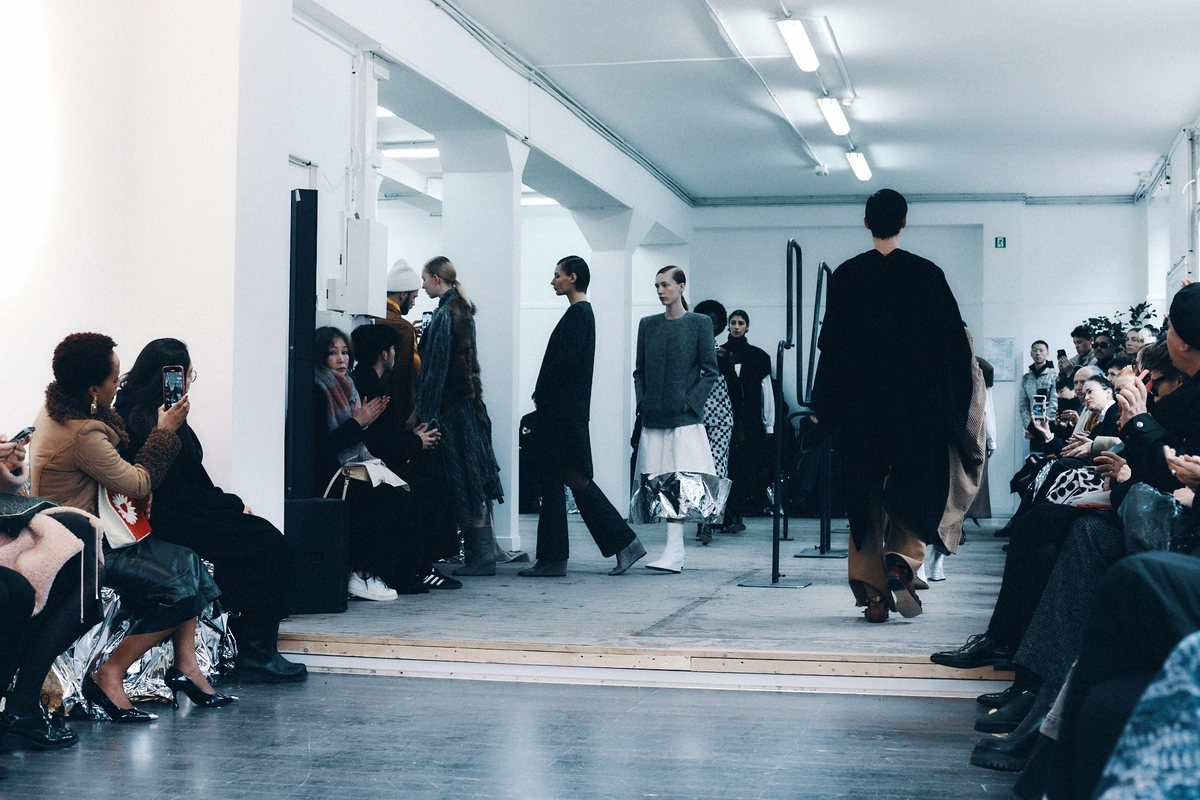
Niccolò Pasqualetti: designing human diversity
«The fluidity of stone and the sensuality of water»: Niccolò Pasqualetti on being an independent and emerging brand today: birth and growth of the designer now a LVMH prize finalist
Niccolò Pasqualetti: brand rise till the finals of LVMH prize
The need to create his own brand was born for Niccolò Pasqualetti as a result of a series of experiences in large international brands such as The Row and Loewe. What pushed him to create his own language in the Italian design system was the rediscovery of Italian manufacturing and craftsmanship, which he had already appreciated abroad as a focal point for the production and research of several brands.
«The pandemic period led me to live in close contact with my home region, Tuscany, from here I started again in building the Niccolò Pasqualetti brand», says the designer. The brand was born in 2021 and is characterized by its research among the techniques, fabrics and traditions of an Italian savoir-faire, recontextualizing them in an unconventional way.
«This means working with artisans who have been practicing their craft for years according to certain structures and patterns and trying to make them break these patterns through continuous research», Pasqualetti explains. The designer today is among eight finalists for the LVMH Prize, the only brand made in Italy this year that has already been awarded the CMNI fashion trust grant 2024.
Fall Winter 2024 by Niccolò Pasqualetti for the LVMH Prize
The pieces presented for selection for the LVMH Prize are from Niccolò Pasqualetti’s Fall Winter 2024. Through a plunge into the known past, away from the present, garments that could potentially have come out of the father’s wardrobe take shape again providing a unique chance to communicate themselves.
The masculine corduroy jacket can be transformed into a fluid dress, reworking static, solid forms through draping. But this is not the only story told by the collection that embraces human diversity, a series of fictional and real episodes mix, hybridizing between Etruscan ruins and Renaissance gestures. The essential is to carry oneself, through a second skin.
Reclaiming elements and materials allows us to remember and still own past histories: tweed is a key element that returns in the wet rain jacket or in classic blazers that fray. Denim returns in a series of jeans with all different washes, and faux fur is used in its cutouts as ornamentation and embedded in fabrics.
Tailoring and classic lines meet exaggerated and unusual volumes, eccentric patterns between checks and embossed polka dots. The mutability of things is highlighted through the use of metal that bends into many crumpled sheets of paper fashioned as accessories or to dress bodies. Materials typical of a fashion linked to the classic are stripped of that grandeur to become fluid and light, contemporary.
No gender fashion: clothes research for human diversity and identity
Freedom is one of the cornerstones on which the brand is founded, the designer specifies, and continues, «When I was growing up and didn’t feel represented by what society wanted me to be or show, there was always this idea of playing with my image through fashion».
Parents’ classic men’s and women’s garments became the pretext for uniting the two worlds in the discovery of new silhouettes and lines. Coming up with new and ever-changing shapes and designs of garments is central to the brand so that a broader spectrum of people can identify. No gender fashion for Pasqualetti was one of the foundations on which he founded his brand, not a posthumous necessity or eagerness to chase a trend.
The personal experience that aims to make her garments universal is not based on the concept of genderlessness but on the possibility of overcoming the normativity of the gender binary. The collections, the designer continues, are studied to fit a variety of different people and bodies, expanding the possibility of identification and use.
«The fluidity of stone and the sensuality of water»: antithesis in Niccolò Pasqualetti
The union of opposites is what characterizes the designer and the brand in a juxtaposition of seemingly contrasting forms or shapes that should clash when combined. The classic Italian with the disruptive, the new with the old, the masculine with the feminine meet in the constant play Pasqualetti exercises with the creation of his garments, symbols of human fluidity.
Antithesis and the play of contrasts are also key elements in the choice of fabrics: more traditional materials such as tweed are placed side by side with other less recognizable experiments such as leather treated like paper. The clash that is created between the various elements of the final looks that make up the collection resembles a trick that is revealed only by getting closer to observe the garments.
«The fluidity of stone and the sensuality of water», this is the claim that accompanies the Niccolò Pasqualetti brand, emphasizing its focus on the play of opposites even in the natural world. Extremes that coexist, allow themselves to shape each other, in a contrasting image that the designer defines as sensual. Ambiguity is another aspect that is under constant investigation through the brand, and these subdued messages represent endless possibilities of meaning by pushing beyond appearance.
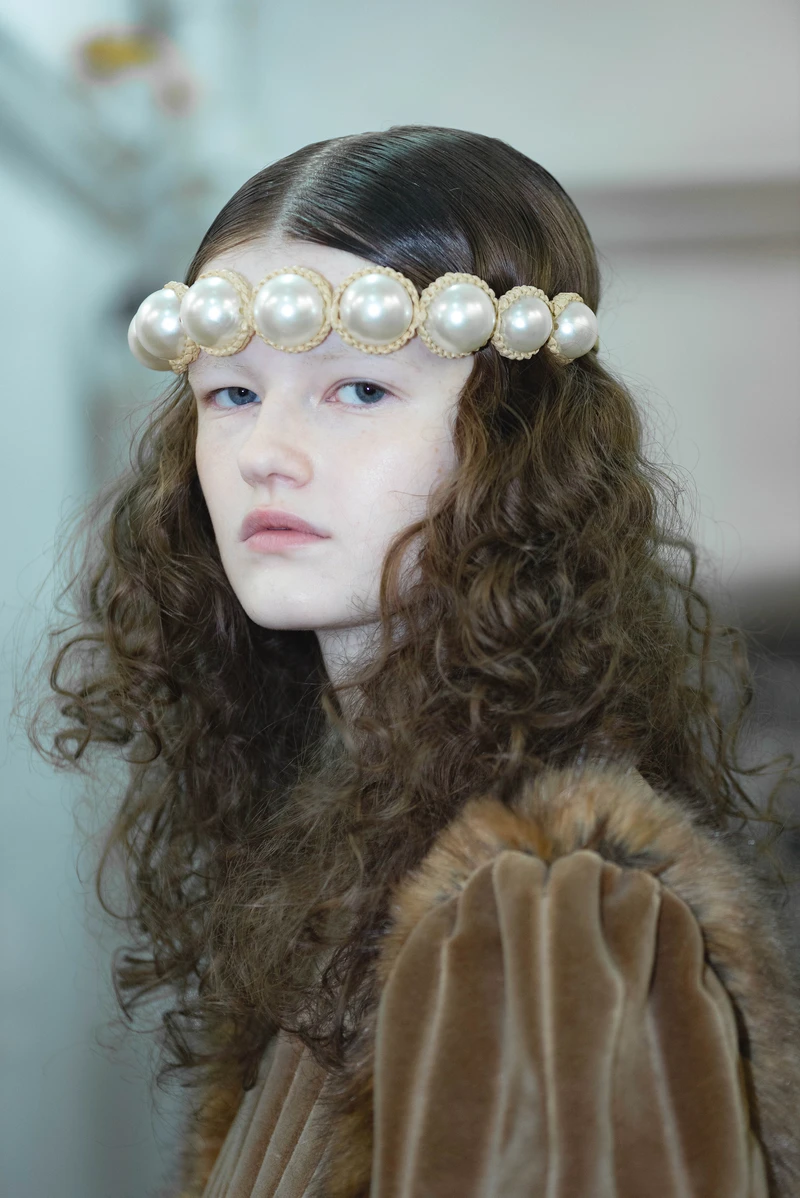
Human fluidity: experimentation with forms
Organic sculptures with sinuous shapes inspired by nature, Barbara Hepworth, Constantin Brâncuși, and Henry Moore are some of the forms Niccolò Pasqualetti looks at. «Abstraction and three-dimensionality interest me a lot in these sculptors, but I find inspiration in broad contexts from industrial and interior design, Le Corbusier and the Bauhaus», the designer elaborates.
Besides the material aspect there is also the feeling that a given source can convey, an idea of simplicity, an instinct that the designer finds in the forms but also in the people he meets. The details, the mistakes, the way they wear or do something captures Pasqualetti’s attention and he makes it his mood board for the collections.
The mix and clash of elements from the most classic and extravagant forms, straight and curvy, exaggerated and minimal, allow the contemporary identity of human fluidity to be encountered. The freedom of experimentation in this regard is also given by the connection with the idea of no gender fashion.
Jewellery evolution in Niccolò Pasqualetti
The urge to experiment with the shapes and textures of production materials started with Niccolò Pasqualetti’s first collection, which focused on jewelry. «I really love three-dimensionality, and jewelry also has the ability to last over time, it is not tied to seasonality as in fashion, and it is in contact with the body, not dressing it but interacting in a dual encounter», the designer explains.
The first jewelry production was the pretext for the launch of the brand that won the Who is on next? award in 2021. The essence of Pasqualetti’s work passes through this collection for the juxtaposition of unconventional forms, the possibility of wearing the jewelry in different ways, the opportunity of being decomposable.
Season after season, even through the shapes of the garments, this collection has been repurposed and pieces have been added to complement the clothing. The first line featured gold-plated metal and palladium with semiprecious stones or marbles of different veins and various colors, the focus of the research was in fact on the stones.
The second line, TERRA AVVOLTA, on the other hand, was developed in several limited series with an artistic approach. This one was dedicated to found or one-of-a-kind pieces reassembled in a handmade net, reminiscent of the inspiration of the Arte Povera of the 1960s that encouraged using what one has on hand to create a new work of art.
The chance to be independent: the work of young Italian designers as told by Niccolò Pasqualetti
Today, in the fashion world, it is not easy to be an independent brand, Pasqualetti explains with respect to his experience. «Being independent means being small and starting from scratch, without having a structure of manufacturers or suppliers behind you. Being a designer for a brand is very different from having your own brand».
With respect to the sustainability of garments and their production, which is a key element in building a contemporary brand, Pasqualetti cites initiatives that start from recovery and reuse. As with the TERRA AVVOLTA jewelry collection, there are also pieces in the clothing line created by reassembling other fabrics. As for denim, in recent collections, garments made entirely from recycled patchwork have been produced. Deadstock from major Italian and European weavers is also used to reduce waste, and can also help with costs.
How to be independent: fashion trust grant & more
In Italy and Europe there are some initiatives such as CNMI fashion trust grant, counseling, funding through awards such as the LVMH Prize. They can be a help or even a springboard for emerging designers and their projects, according to Pasqualetti. In particular in the first steps of starting projects, it is necessary to have someone to compare with, and often the juries of these prizes are composed of high-level experts.
In stabilizing the business then, as well as in running a showroom and corporate side, there is a lack of support from institutions, which is filled with difficulty by emerging designers. It is necessary when you are independent to fight to be able to impose and put forward your ideas, the designer reiterates.
And concludes, «from a practical point of view it means having small quantities and producing little compared to other luxury brands, but also being able to make choices by understanding the essence of what the brand wants to communicate, this I think means being independent today».
Niccolò Pasqualetti
The independent brand was founded in 2021 by the eponymous designer and it is based between Tuscany, Italy, and Paris. The production is made in Italy while the business offices are in France. Niccolò Pasqualetti has just won the CMNI fashion trust grant 2024, an initiative that provides financial and educational support to independent made-in-Italy brands, and is in the finalist shortlist for the LVMH Prize.
Chiara Narciso
